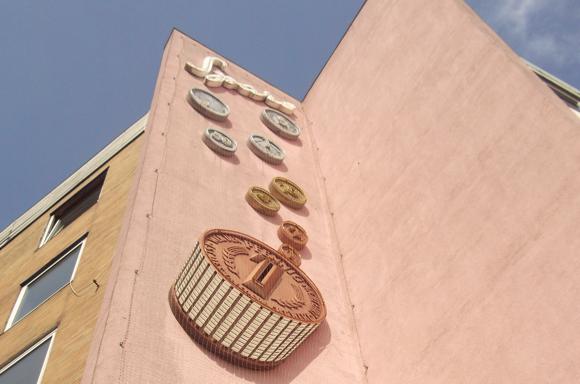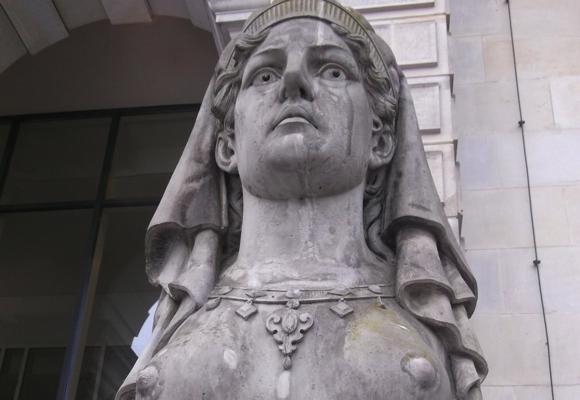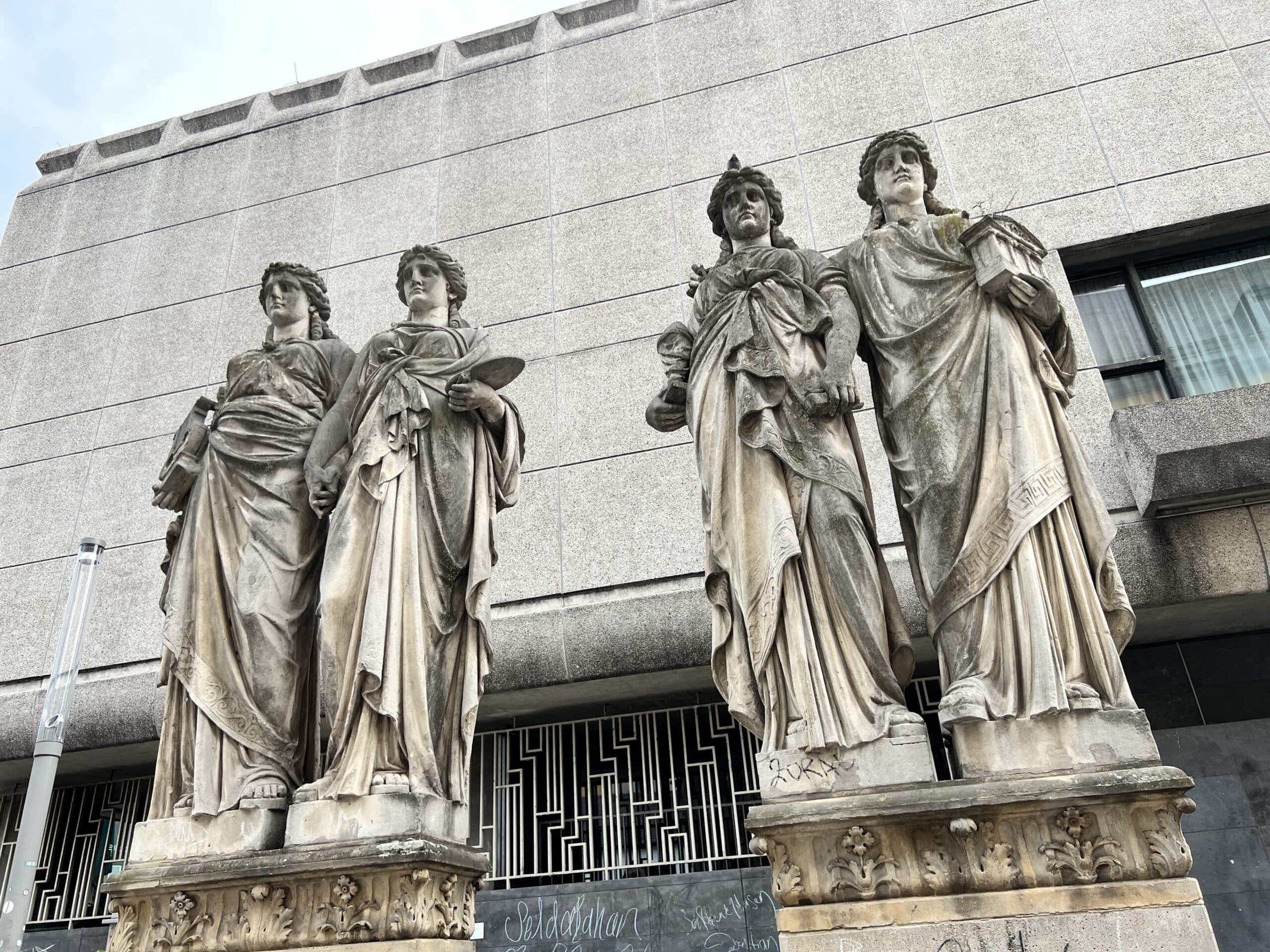Teams, tales and tips – a guide to the local game
The modest community of Mönchengladbach is known for one thing, and one thing only: Borussia. Up until 1960, the year then equally modest Borussia won the German Cup, this town halfway between Düsseldorf and the Dutch border was called Mönchen Gladbach, before that München-Gladbach. Most locals still refer to it as ‘Gladbach’.
The name simplification came as both Borussia and another force were emerging in the newly professional German game, Bayern München. Borussia, under legendary coach Hennes Weisweiler, would challenge the Bavarians for the Bundesliga title. Between 1969 and 1977, the title went nowhere but Mönchengladbach or Munich, and everyone in the European game got to know this little town with the 15-letter name.

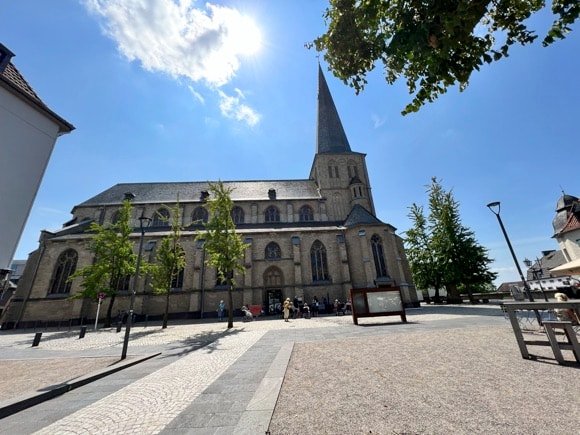
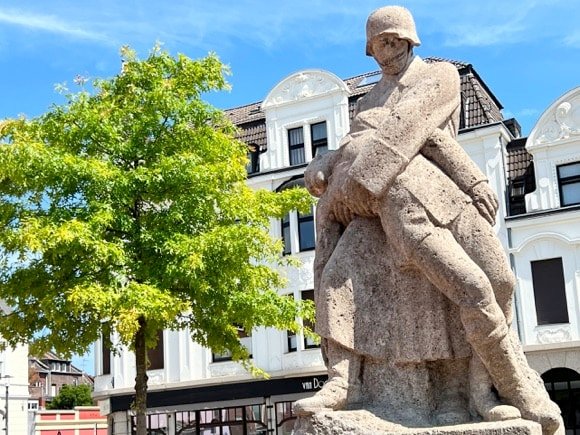
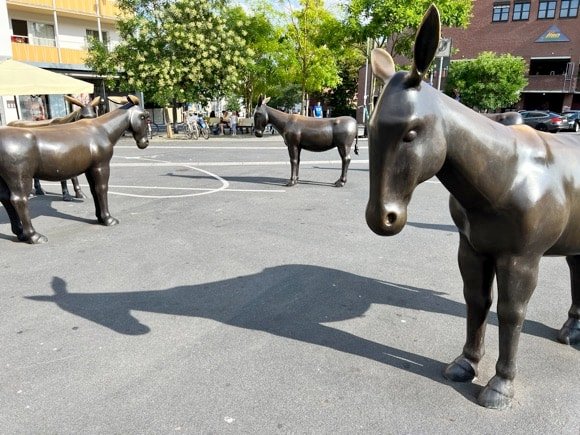
Their base was the Bökelberg, a revered landmark nicknamed the ‘Gravel Pit’ that dated back to World War I. Here in residential Eicken north of town, where Borussia had been founded in 1900, Weisweiler brought through some of the greatest talents ever to grace to German game, among them Günter Netzer, Berti Vogts and Rainer Bonhof.
Struggling to keep up with the likes of Bayern and other moneyed clubs, Borussia slipped down, unable to squeeze more than 34,500 into the cramped Bökelberg and increase ticket revenue.
Although relegated in 1999, Mönchengladbach were able to build the Borussia-Park on Hennes-Weisweiler-Allee and move from their beloved Bökelberg in 2004.
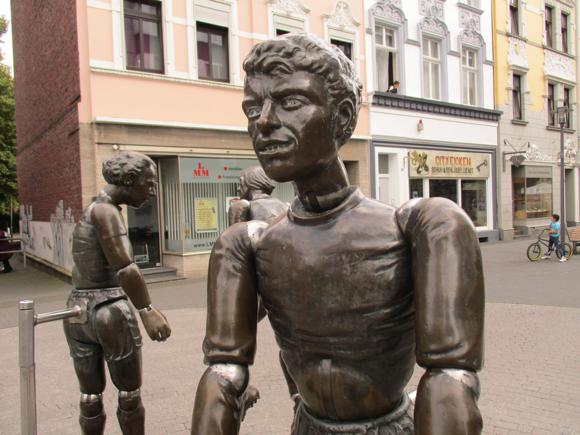



Now based in the town’s western outskirts, close to the military-town-within-a-town of Rheindalen, the base for British forces in Germany, Borussia have recently enjoyed healthy seasons in the Bundesliga in front of an average 50,000 fans. European nights briefly returned to Mönchengladbach, while the legacy of the Weisweiler era lingers.
Curious travellers can visit the remains of the old ground, its terraces still in place, marked on maps as the Ehemaliges Stadion am Bökelberg in reference to the former stadium.
Close by, marionette-style statues of the key players Netzer, Vogts and Wimmer, stand on Eickener Straße, although the classic Borussia bar overlooking them, the Alt Eicken, is sadly no longer with us. The figures comprising the Fohlenelf-Denkmal, the Fohlen Memorial, have movable parts, meaning you can adjust Netzer’s legs or Vogts’ arms.
Elsewhere in town, several bars display evidence of the long-established fan friendship with Liverpool. After the Hillsborough disaster, Borussia supporters collected thousands of Deutschmarks for families of the 97 victims.
Getting Around
Arriving in town and local transport




The nearest airport to Mönchengladbach is Düsseldorf, 35km (21.5 miles) away. For Düsseldorf Hbf main station in the city, use the S11 S-Bahn, which is the only line served by the Terminal station (Düsseldorf, D-Airport Terminal A/B/C) downstairs in the main airport building. Trains run every 20-30mins.
Transport is provided by the VRR regional train/tram network also used locally in Mônchengladbach – for ticket details, see below.
For all other regional and mainline trains from the airport, take the SkyTrain (€1.90, every 6mins) monorail to Düsseldorf Airport train station (D-Flughafen Bf). Certain onward rail tickets and passes are valid for the 7min airborne journey.
For Mönchengladbach, the easiest option is to head into Düsseldorf on the S11 and take the train (€15, overall journey time 40-50mins) which usually leaves from platform 4 at the city’s main station.
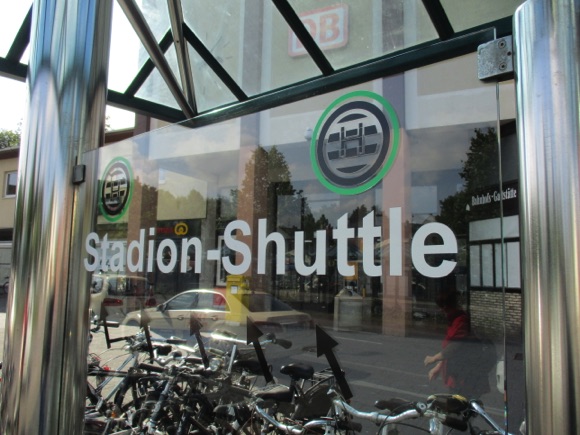


From Düsseldorf Airport to Mönchengladbach, a taxi (+49 211 211 211) should cost about €85 and take 25mins.
Although slightly further away at 80km (50 miles), Köln-Bonn Airport serving Cologne has the advantage of an hourly direct train to Mönchengladbach (€14, 1hr 10mins) from its own railway terminal.
A single ticket on the swift VRR regional train/tram network for the journey of five stops/15mins is €3.30. Hopping around can work out cheaper with a 24hr or 48hr pass or by using VRR’s eezy app. Note that your Borussia match ticket is valid for free transport within the VRR network.
For a local cab, call TaxiZentrale Mönchengladbach on +49 2161 13013.
Where to Drink
The best pubs and bars for football fans
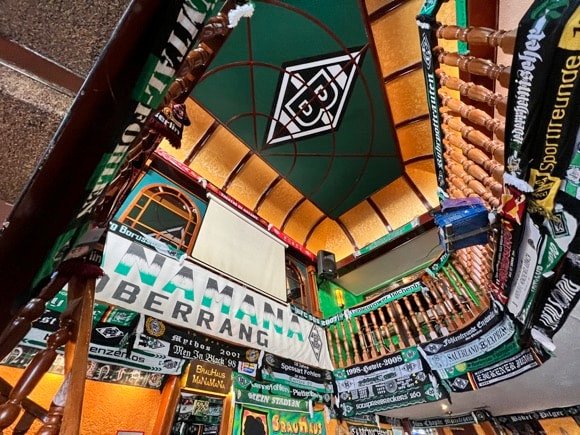



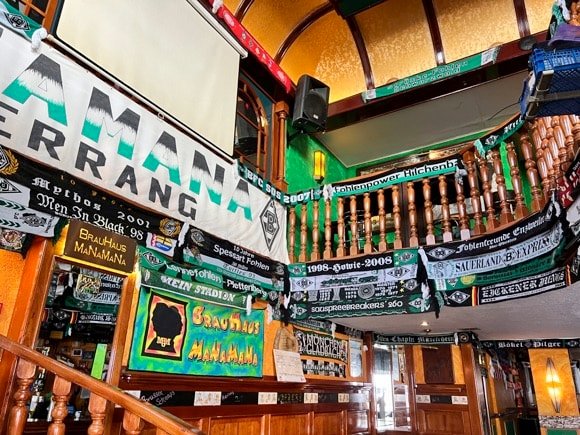
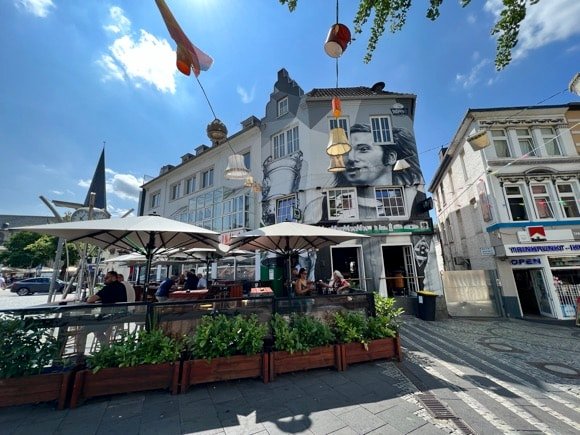



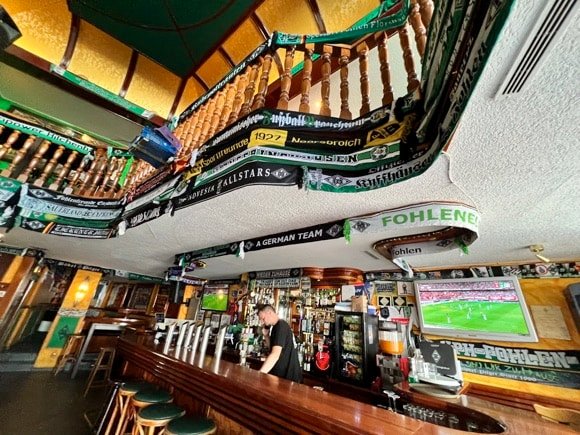

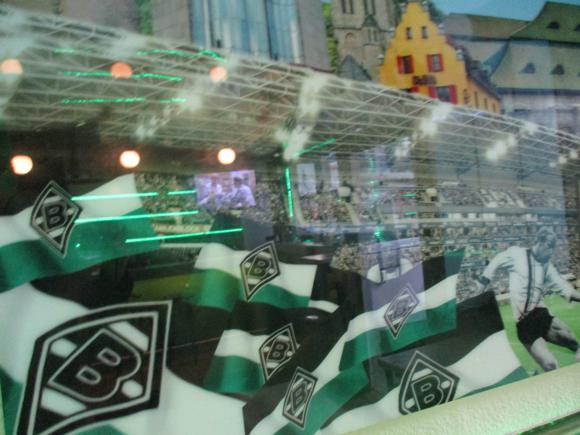
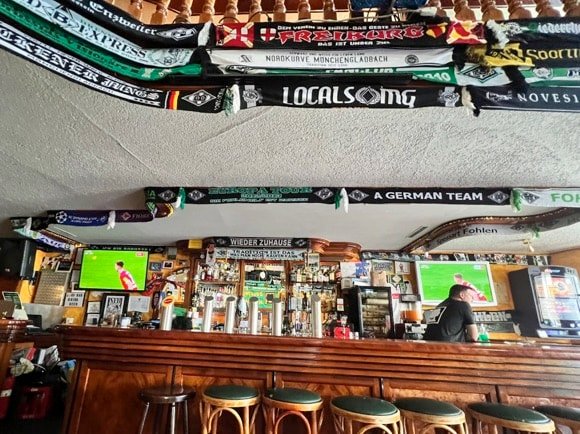
Opposite the station, Humboldt Schänke is a real Borussia hangout, done out in green and white, with the club crest on the ceiling and Fohlen paraphernalia everywhere. Note also the large mural in which team and cityscape dovetail. A must for TV matches.
In town, drinking haunts line focal Alter Markt. The classic spot is MaNaMaNa, one of Germany’s finest football bars and a shrine to Borussia Mönchengladbach, conceived by Hauke and Michel when working in Ibiza. As the DJ used to spin that catchy tune from Sesame Street, the name stuck.
Beer is the namesake house brew in lager, Alt and wheat varieties, using only local ingredients. Scarves and screens abound – there might still be FC Aarau hiding in there somewhere, as Marcel is Swiss – and opening times are either five hours before kick-off, or from 2pm at weekends, from 5pm Tue-Fri. The façade murals are works of art, overlooking the plentiful terrace seating.
Over the square, Markt 26 is a party-centric bar that shows live Borussia and other Bundesliga games. Alongside, lounge bar/restaurants such as Cannape aand SunSide allow you to warm up for the evening over a cocktail.
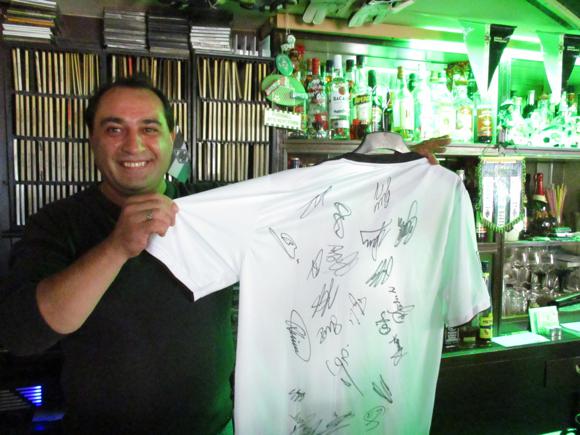
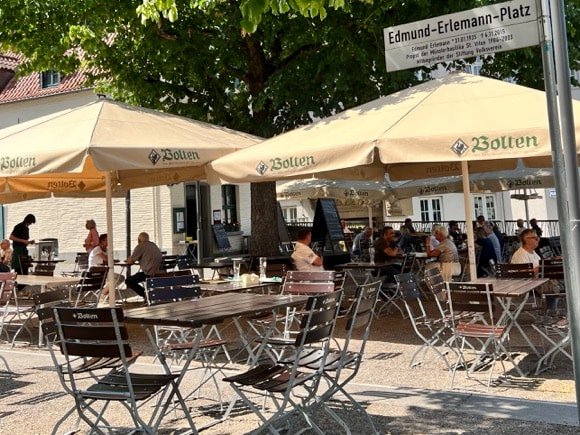
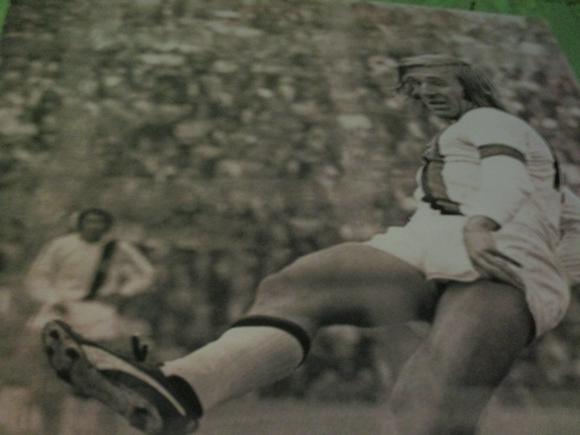

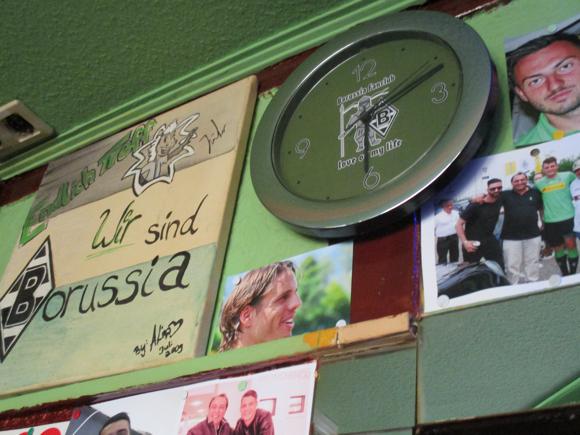

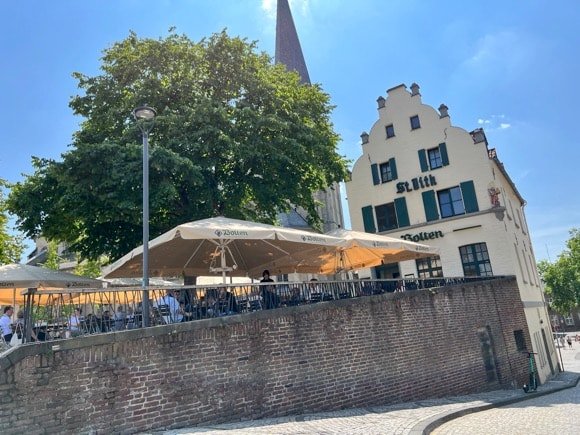
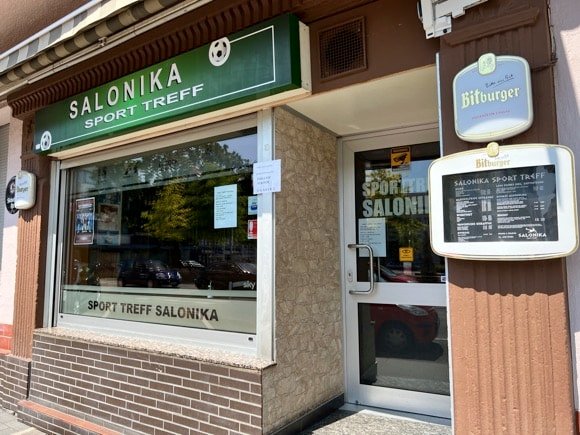

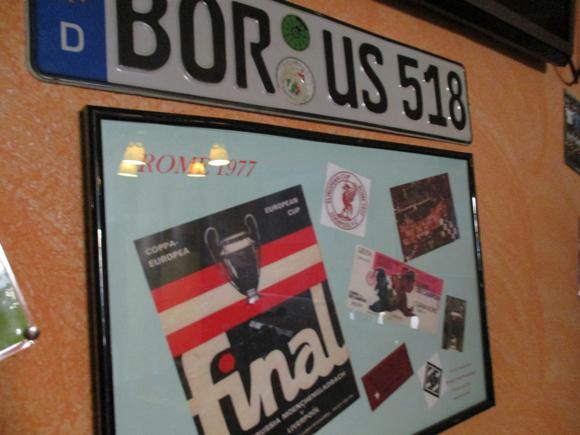
Still on the main square but more traditional in vein, St Vith can trace its history back to 1586, 320 years after the nearby Bolten brewery whose beers it serves. A pleasant terrace and noon opening if Borussia are playing on a Sunday keeps the place buzzing.
An absolute classic fans’ bar is the Endlich Treff a short walk from the Alte Markt on Neustraße, clocking up two decades or more of Borussia worship and the serious quaffing of Bolten Alt and Bitburger beers.
Over on Kapuzinerplatz, Déjà Vu is another popular Borussia spot. Also football-centric, neighbourhood corner bar Zur windigen Ecke, the former Carola’s Am Büjelieser at 98 Aachener Straße, hosts an annual pilgrimage of Liverpool fans – hence Graham’s Corner within, and a montage of souvenirs from that night in Rome. Over at Schillerplatz, the Salonika Sport Treff is screen heaven, a friendly football hangout not afraid to party – or to show its PAOK leanings.
A 15-minute walk away up Eickener Straße is where you’ll find the site of the old Bökelberg, two sets of terraces still ranged around the neat white residencies that replaced the stadium. Sadly, old fans’ hangouts are few and far between since the closure of the Alt Eicken. To compensate, Bei Milan serves classic Balkan cuisine (čevapčići, pljeskavica), with a terrace to reflect on a golden era of football half a century ago.
Where to stay
The best hotels for the stadium and town centre
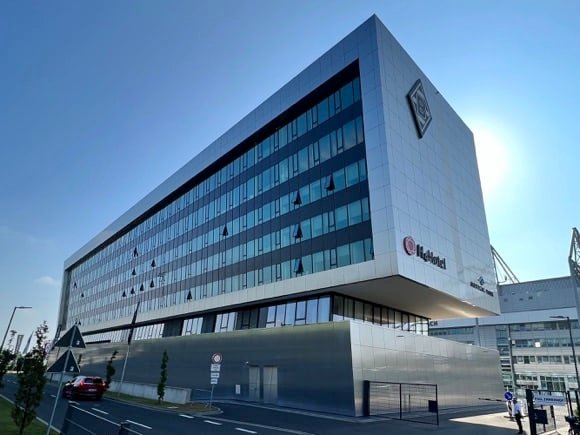
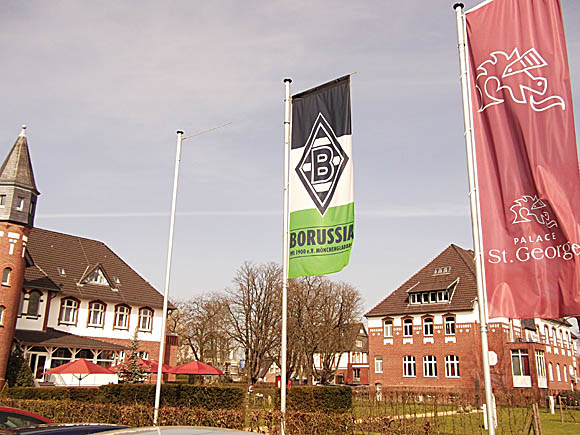

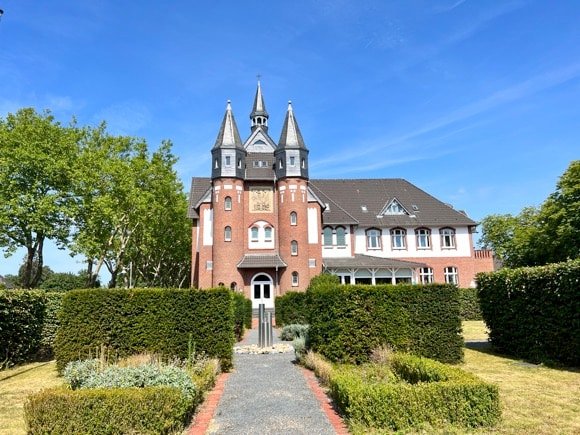
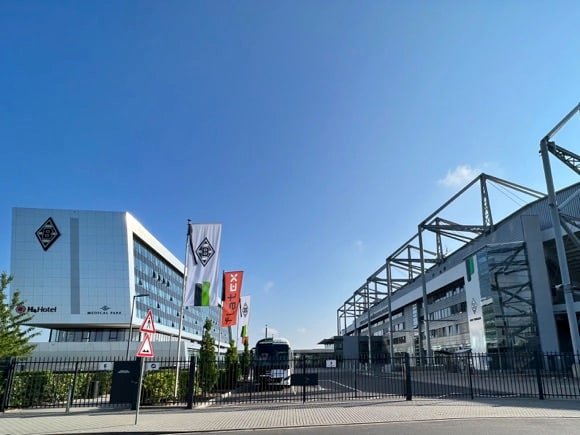
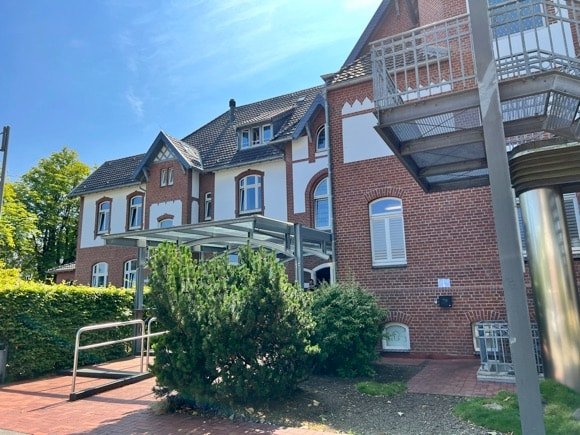

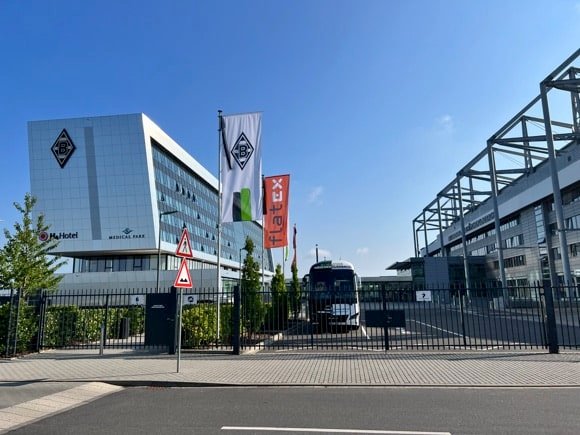

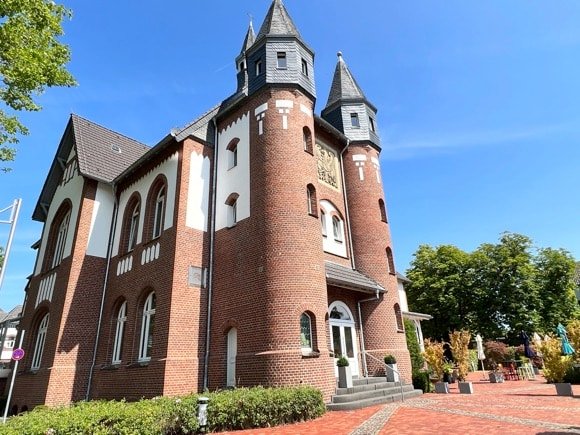
Among Europe’s best stadium hotels, the H4 Mönchengladbach im BORUSSIA-PARK allows you to lay your head on a pillow centrepieced by the diamond-shaped Borussia badge, brush your teeth beneath an likeness of the German Cup and relax by a huge image of former Borussia star Martin Dahlin…
This 131-roomed themed lodging stands in the same building as the club shop and museum right beside Borussia-Park. The H4 (‘Hah-Fier’) does not offer match packages although has covered its restaurant ceiling in a vast photograph of the classic Borussia side from the 1970s. Those with VIP match tickets can dine before the game. There’s a sauna, too, and seminar rooms for meetings. The address? Natürlich, Hennes Weisweiler Allee, named after the transformational coach.
Also near the stadium on main Gladbacher Straße, the Palace St George is a high-spec design hotel and restaurant with individual art in each room. Football packages occasionally offered, though match-day custom has since been cornered by the H4 (see above).
Also close to the ground, the more traditional Hotel Garni Tannenhof is a more modest guest house with doubles, singles and cheaper rooms without private facilities. Note that reception is only open earlier on weekday mornings.
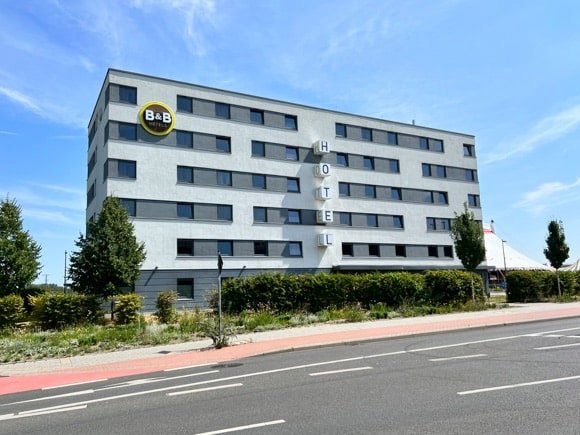



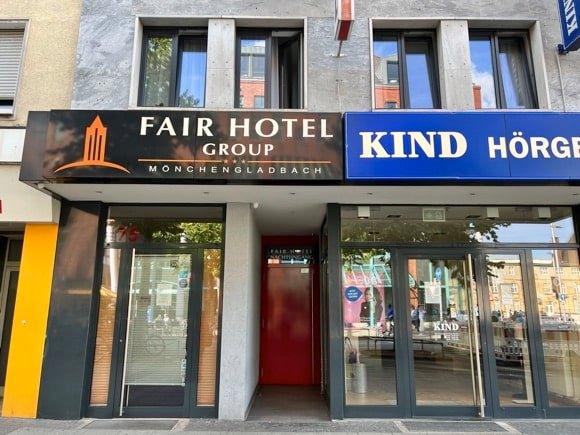
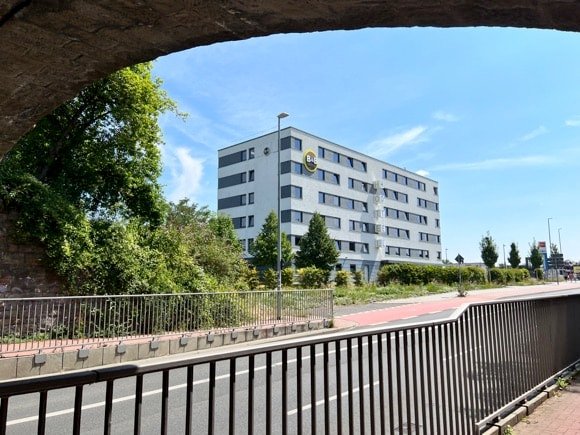
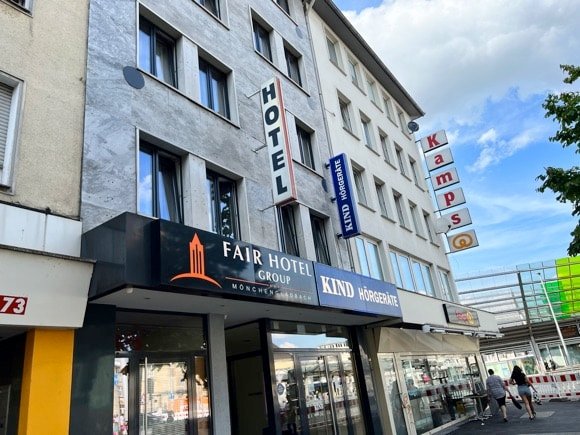
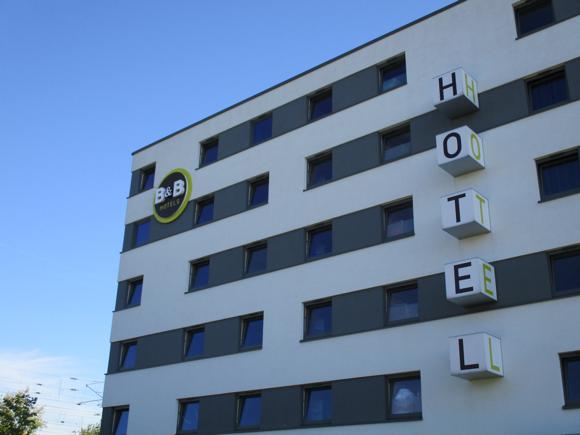
Currently being renovated and due to open in 2025, the Mercure Parkhotel Mönchengladbach is the former Dorint, a four-star first opened in 1959 and set in greenery a short walk from the town centre. Near the junction of Aachener Straße that leads to the stadium – buses between town and ground pass close by – the Leonardo is comfortable and business-friendly.
Near the station, the Fair Hotel is one of a national chain of modest lodgings in convenient locations. The nearby Palazzo is equally affordable. Behind the station, accessed via Breitenbachstraße, the B&B Hotel Mönchengladbach is part of a nationwide budget chain, this one with football-themed rooms.







